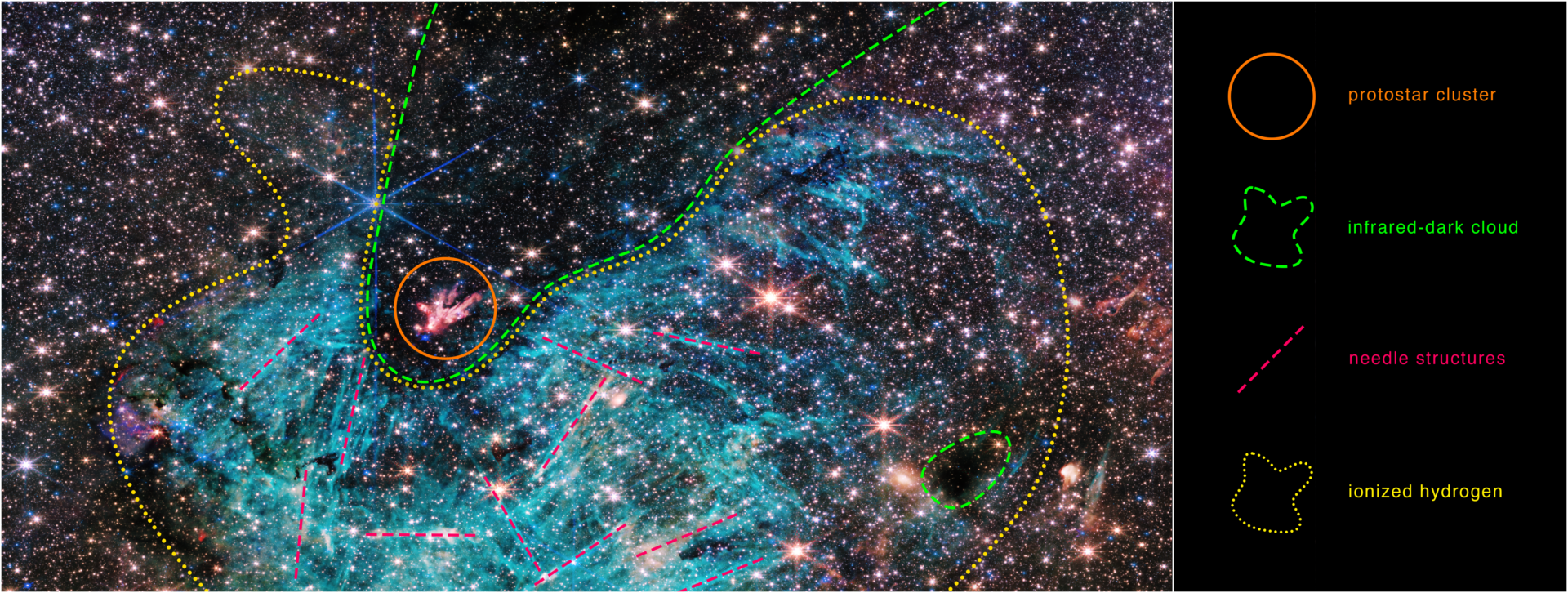- Ahead of its second launch anniversary the James Webb Space Telescope has captured the centre of our galaxy.
- The images captured highlight protostars and dense infra-red dark clouds where stars are forming.
- The image and data gathered will help astronomers and scientists understand how stars are formed in different regions of space.
As we approach the two-year anniversary of the James Webb Space Telescope’s (JWST) launch into space, the cosmic observer has beamed back some incredible imagery from the centre of the our galaxy, the Milky Way.
The images are from the Sagittarius C (Sgr C) region, roughly 300 light-years from the Milky Way’s central supermassive black hole Sagittarius A. This region is rather important for astronomers as it is where stars form. The image captured which is embedded below features an estimated 500 000 stars.

Amid these 500 000 stars are so-called protostars, stars that are still forming and gaining mass. At the centre of these stars is a massive protostar with 30 times the mass of our Sun. The stars are emerging from behind an infrared-dark cloud which is so dense that the region looks emptier than it actually is. Similar dark patches are littered throughout the image and NASA says that this is where new stars are being formed.
“There’s never been any infrared data on this region with the level of resolution and sensitivity we get with Webb, so we are seeing lots of features here for the first time,” the observation team’s principal investigator Samuel Crowe said in a statement. “Webb reveals an incredible amount of detail, allowing us to study star formation in this sort of environment in a way that wasn’t possible previously.”

Despite the dense nature of the infrared-dark cloud, the centre is close enough to Earth to study individual stars using JWST. This will give astronomers the ability to gather more information than ever before about how stars form, how this process may depend on the cosmic environment and particularly how this development differs depending on the region it is forming.
“The image from Webb is stunning, and the science we will get from it is even better,” explains Crowe. “Massive stars are factories that produce heavy elements in their nuclear cores, so understanding them better is like learning the origin story of much of the universe.”
Scientists are only just beginning to sink their teeth into the data JWST has beamed back to Earth and with the promise of it giving us a better understanding of our galaxy, and potentially the universe formed.

